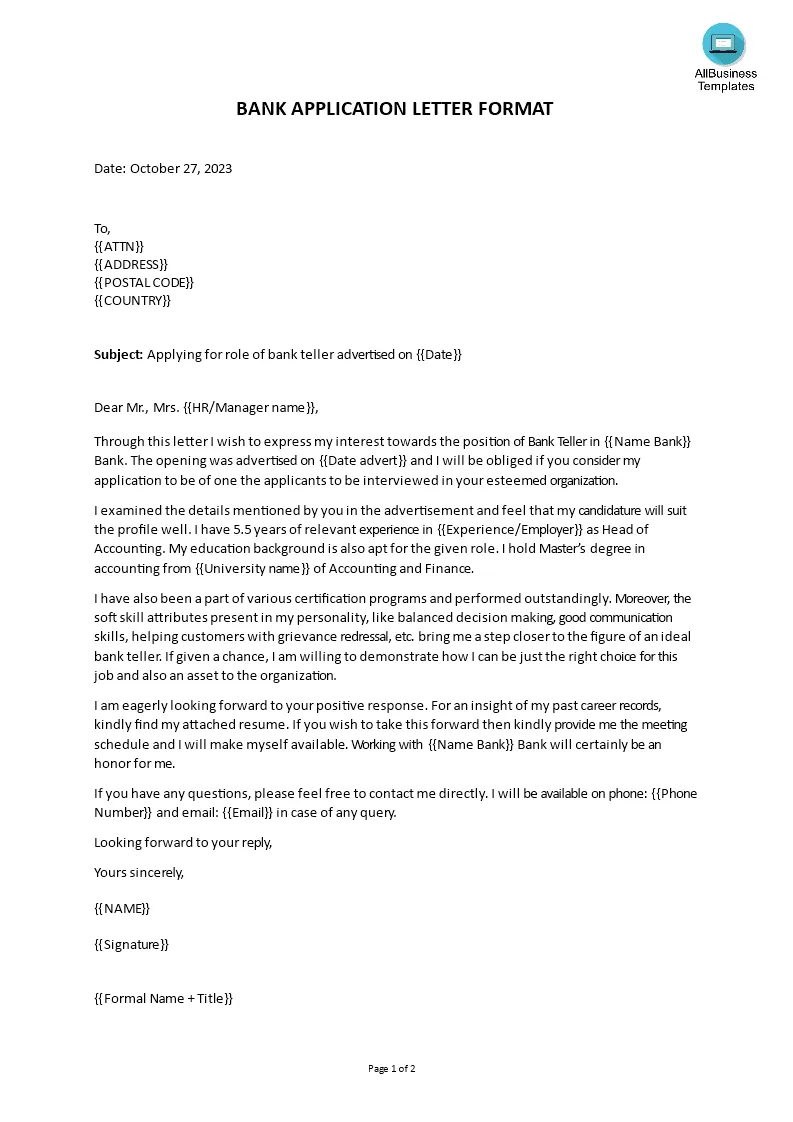Crafting the Perfect Bank Teller Cover Letter
A well-crafted cover letter is your first chance to make a positive impression on a potential employer. For entry-level bank teller positions, where competition can be fierce, a strong cover letter is crucial. It’s not just a formality; it’s an opportunity to showcase your personality, highlight relevant skills, and demonstrate your genuine interest in the role and the banking industry. This guide will walk you through the essential elements of a compelling bank teller cover letter, helping you stand out from the crowd and increase your chances of landing an interview. Remember, your cover letter is a reflection of your professionalism and attention to detail – qualities highly valued in the banking sector.
Highlighting Your Skills and Qualifications for the Role
Since you’re applying for an entry-level position, you might not have extensive work experience. That’s perfectly fine. The key is to emphasize the skills and qualifications you do possess that align with the bank teller role. This includes transferable skills gained from previous jobs, volunteer experiences, academic achievements, or even extracurricular activities. Your cover letter should clearly and concisely demonstrate how your skills and experiences make you a suitable candidate. Focus on the positive, highlight your strengths, and tailor your letter to match the specific requirements mentioned in the job description. This tailored approach shows the hiring manager that you’ve taken the time to understand their needs.
Key Skills to Showcase in Your Cover Letter
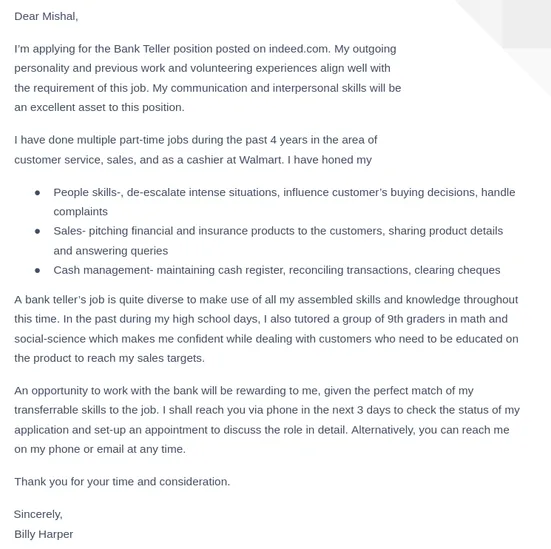
Bank tellers require a unique blend of skills to excel in their roles. Your cover letter should spotlight these core competencies to impress the hiring manager. Make sure you incorporate these skills into your letter, providing examples of how you’ve utilized them in the past. Be as specific as possible, as general statements without supporting evidence may not be as effective. By highlighting your key skills, you demonstrate your aptitude for the position and signal your readiness to contribute to the bank’s success.
Customer Service Experience
Customer service is paramount for bank tellers. Highlight any experience you have in interacting with the public, resolving customer issues, or providing excellent service. Even if your experience isn’t directly related to banking, focus on transferable skills like active listening, empathy, and problem-solving. For example, if you’ve worked in retail, describe how you handled customer complaints or assisted customers with their purchases. Quantify your achievements whenever possible, such as the number of customers you assisted per day or any positive feedback you received. The aim is to provide concrete examples of your ability to provide exceptional customer service.
Communication and Interpersonal Skills
Bank tellers must communicate effectively with customers and colleagues. Emphasize your ability to communicate clearly, both verbally and in writing. Highlight your interpersonal skills, such as your ability to build rapport, maintain a positive attitude, and work well in a team environment. Provide examples of situations where you successfully communicated with others, whether it was explaining complex information to a customer or collaborating with colleagues to achieve a common goal. Demonstrate your strong communication skills by the clear, concise, and professional tone of your cover letter, and showcase your ability to build relationships.
Attention to Detail and Accuracy
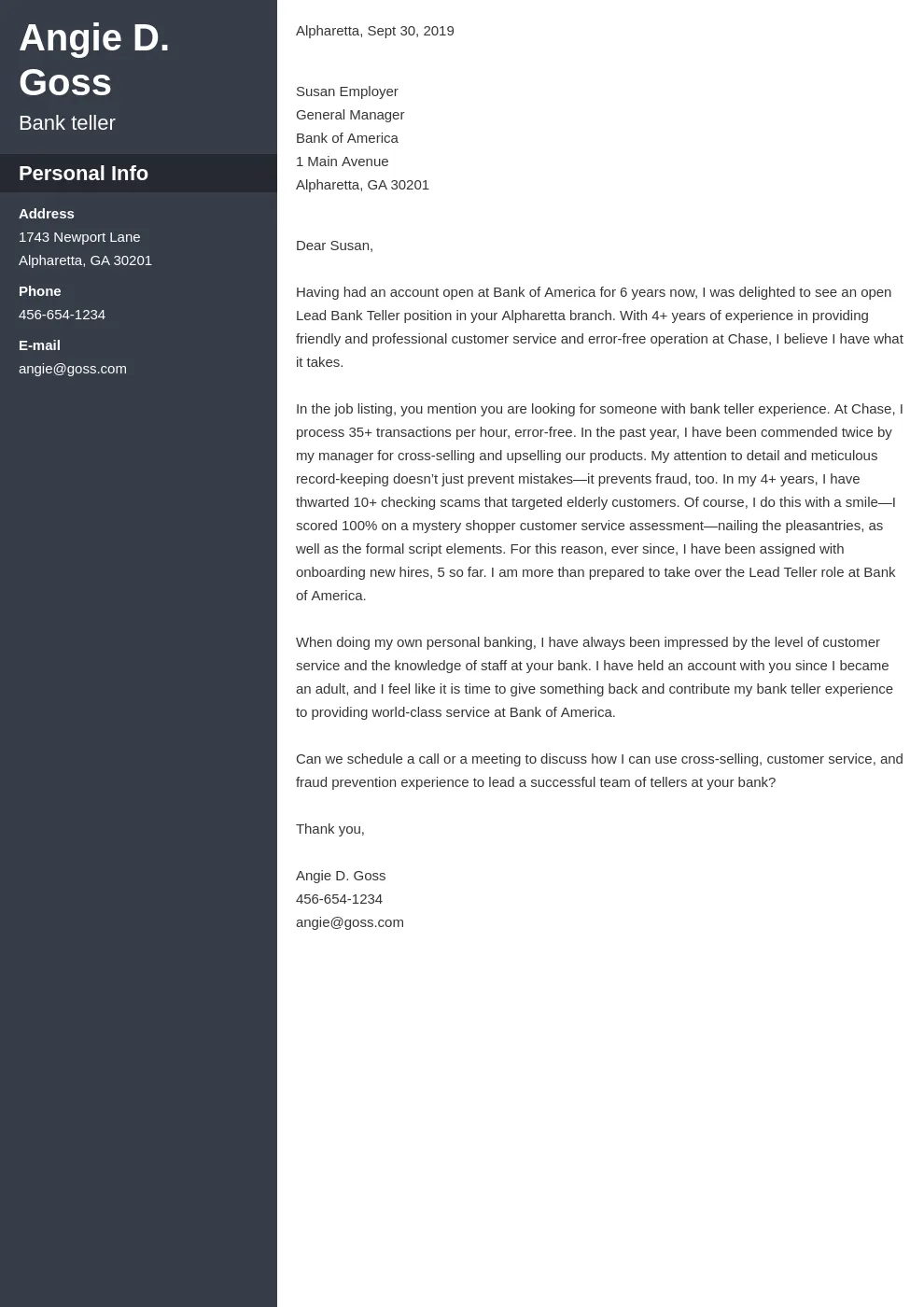
Accuracy is critical for bank tellers. Showcase your ability to pay close attention to detail, follow procedures, and maintain accuracy in your work. If you have experience handling money, balancing cash drawers, or processing transactions, be sure to mention it. Even if your experience isn’t directly related, you can highlight examples of your attention to detail from other areas of your life, such as academic achievements or hobbies that require precision. The aim is to convince the hiring manager that you can handle financial transactions with care and accuracy.
Quantifying Achievements and Experiences
Whenever possible, quantify your achievements and experiences to make your cover letter more impactful. Using numbers can help illustrate your skills and make your accomplishments more tangible. Consider how you can use metrics to demonstrate your skills. This could be the number of customers you assisted, the percentage increase in sales you contributed to, or any other measurable results. The more specific you are, the better. The bank will get a clearer picture of the value you can bring to their team. Ensure that you select quantifiable examples that demonstrate your ability to excel in a bank teller role, such as accuracy, efficiency, and problem-solving.
Using Numbers to Showcase Your Abilities
Numbers add credibility to your cover letter and highlight your achievements. For example, instead of saying you “processed transactions efficiently,” you could say “processed an average of 50 transactions per hour with 100% accuracy.” If you’ve handled cash before, mention the amount you were responsible for, such as “managed cash drawers with balances up to $10,000.” If you have experience in customer service, state the number of customers you assisted daily or the positive feedback you received. These numbers can show your ability to thrive in a fast-paced environment and your commitment to providing exceptional service. The more specific your examples, the greater impact they will have on the hiring manager.
Formatting Your Bank Teller Cover Letter
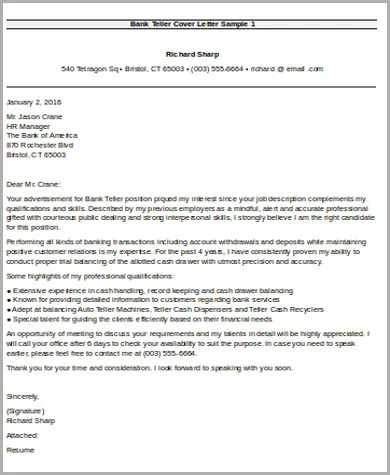
The format of your cover letter is as important as the content. A well-formatted cover letter shows that you are organized, professional, and detail-oriented. Here are some key elements to consider when formatting your cover letter for a bank teller position. It shows that you respect the hiring manager’s time, and you are willing to take the time to create a professional document.
Essential Sections to Include
Your cover letter should include specific sections to ensure it’s complete and professional. The structure helps the hiring manager quickly grasp the key details of your application. Be sure to tailor each section to the requirements of the bank teller position you are applying for. A structured and well-organized cover letter highlights your professionalism, ensuring you make a positive first impression.
Header and Contact Information
Begin with your full name, address, phone number, and professional email address. Make sure your email address sounds professional (e.g., john.doe@email.com, not funnybunny123@email.com). Include the date and the hiring manager’s name and title (if known), and the bank’s name and address. This section immediately provides essential contact details and demonstrates that you have researched the bank and are taking your application seriously.
Opening Paragraph
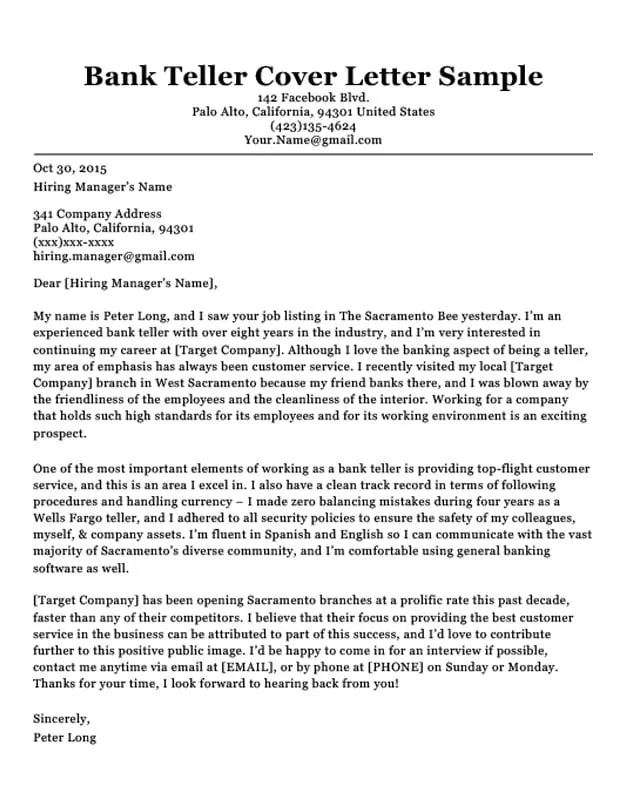
The opening paragraph should immediately capture the reader’s attention. State the specific position you’re applying for and where you found the job posting. Briefly mention why you’re interested in the role and the bank, and express your enthusiasm for the opportunity. Keep it concise and focused on the key reason for your interest. It should also signal that you meet the basic requirements of the job. The opening is your chance to create a positive first impression and encourage the hiring manager to read the rest of your letter.
Body Paragraphs
This is the core of your cover letter, where you highlight your relevant skills, experiences, and qualifications. Use one or two paragraphs to expand on your key skills, providing specific examples of your achievements. Tailor these paragraphs to the job description, referencing the skills and requirements mentioned. Explain how your skills and experiences align with the role and the bank’s values. Show, don’t just tell; provide specific examples to demonstrate your abilities. Each body paragraph should focus on a key skill or qualification, helping the hiring manager easily identify how you meet the requirements of the position.
Closing Paragraph and Call to Action
In your closing paragraph, reiterate your interest in the position and the bank. Thank the hiring manager for their time and consideration. Include a clear call to action, such as stating your availability for an interview and how they can contact you. Reiterate your enthusiasm, but avoid being overly eager or demanding. It is important to end with a professional tone that leaves a lasting positive impression. This final section should leave the hiring manager with a strong impression of your professionalism and interest in the role.
Tailoring Your Cover Letter to the Job Description
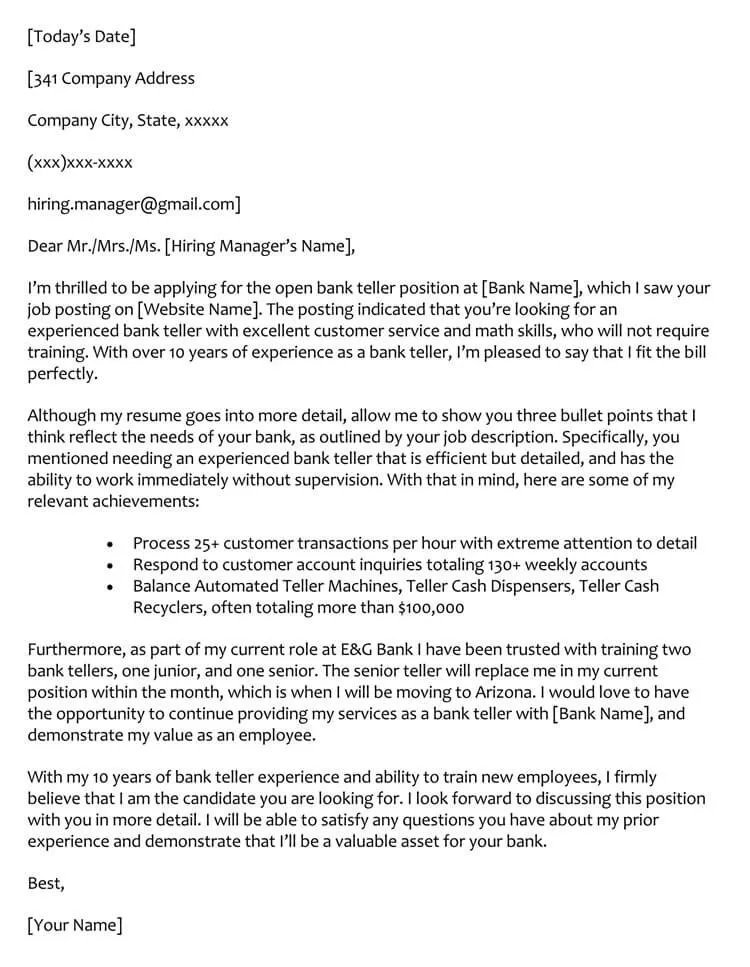
One of the most critical steps in writing a successful cover letter is tailoring it to each specific job description. Generic cover letters rarely impress hiring managers. Instead, carefully read the job description and identify the key skills, experiences, and qualifications the bank is seeking. Use the job description as a guide when writing your cover letter. This demonstrates your attention to detail and your genuine interest in the position. The key is to make sure your cover letter clearly addresses how you meet the specific requirements listed in the job description.
Researching the Bank and Its Values
Before you start writing, research the bank. Understand its mission, values, and culture. This knowledge will help you tailor your cover letter to reflect your understanding of the bank’s goals. Visit the bank’s website, read their “About Us” section, and check out their social media profiles. Identify any recent achievements or initiatives that resonate with you. By demonstrating that you’ve taken the time to learn about the bank, you show that you are truly interested in working there, not just any bank.
Matching Your Skills to the Job Requirements
The job description is your roadmap. Identify the key skills and experiences the bank is looking for. Then, in your cover letter, explicitly address how your skills and experiences align with those requirements. Use the same keywords and phrases from the job description whenever possible. Provide specific examples that demonstrate how you’ve used those skills in the past. This shows the hiring manager that you have the skills they are seeking and that you are a good fit for the role.
Proofreading and Editing Your Cover Letter
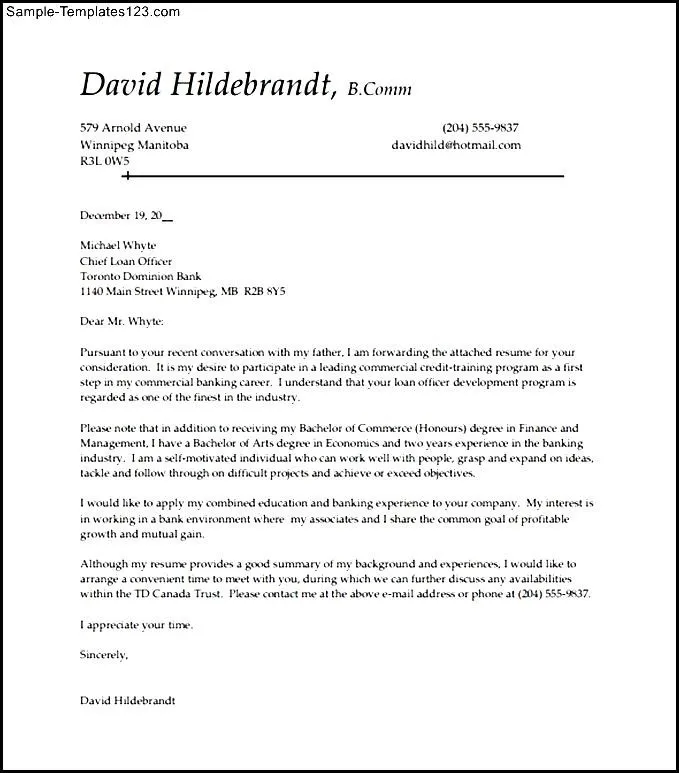
Always proofread and edit your cover letter before submitting it. A cover letter filled with errors can immediately disqualify you from consideration. Check for grammatical errors, spelling mistakes, and typos. Ensure that your sentences are clear, concise, and easy to understand. It’s also helpful to have a friend, family member, or career counselor review your cover letter for clarity and accuracy. A fresh pair of eyes can often catch errors that you might have missed. A polished, error-free cover letter demonstrates your attention to detail and professionalism, making a positive impression on the hiring manager.
Common Mistakes to Avoid
Avoid common mistakes that can detract from your cover letter. Avoid generic language and cliches. Tailor each letter to the specific job. Do not include information that is irrelevant. Be sure to avoid typos, grammatical errors, and any negative or unprofessional language. Ensure your cover letter is easy to read, well-formatted, and tailored to the job description. These simple precautions can greatly increase your chances of getting noticed.
By following these guidelines, you can craft a compelling bank teller cover letter that highlights your skills and increases your chances of securing an interview. Good luck!
